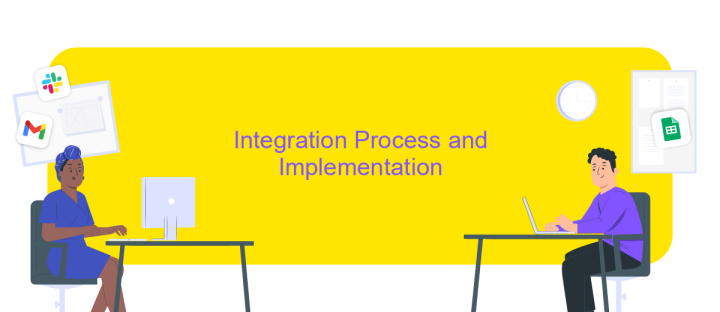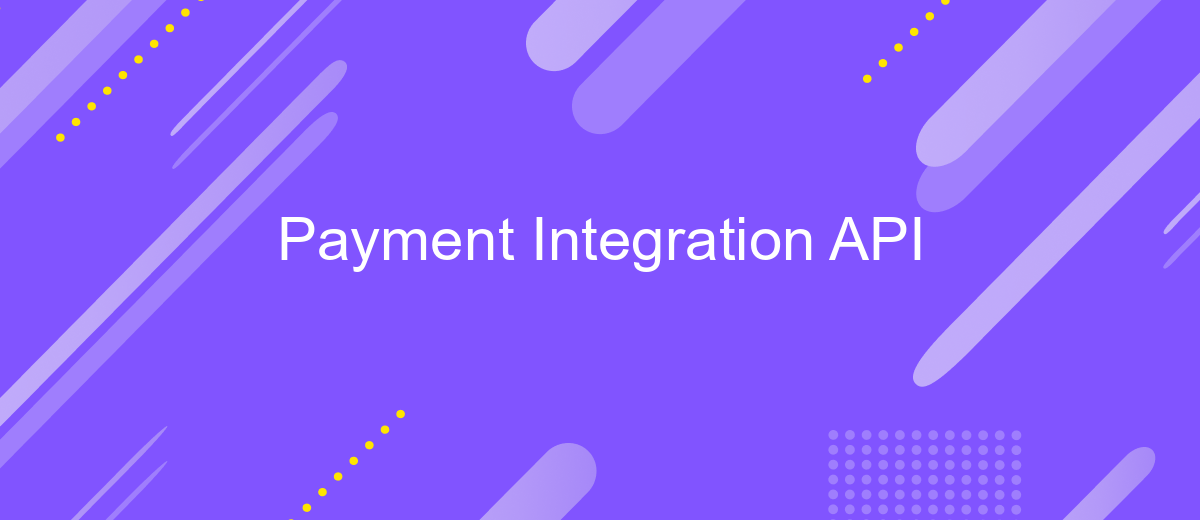Payment Integration API
In today's digital economy, seamless payment processing is crucial for businesses of all sizes. Payment Integration APIs offer a powerful solution, enabling companies to efficiently handle transactions, enhance customer experience, and streamline operations. By integrating these APIs, businesses can securely process payments, manage subscriptions, and access valuable financial data, all while reducing development time and costs. This article explores the benefits and implementation strategies of Payment Integration APIs.
Introduction to Payment Integration API
Payment Integration APIs have become a cornerstone in modern digital transactions, offering seamless connectivity between businesses and payment gateways. These APIs enable businesses to process payments efficiently, ensuring secure and swift transactions for their customers. By integrating a payment API, businesses can enhance their e-commerce platforms, mobile applications, and other digital services, providing a smooth checkout experience.
- Facilitates secure payment processing.
- Supports multiple payment methods and currencies.
- Enhances customer experience with streamlined transactions.
- Offers robust reporting and analytics features.
- Ensures compliance with industry security standards.
By adopting a Payment Integration API, businesses can significantly reduce the complexity of handling financial transactions. This integration not only simplifies the payment process but also helps in building customer trust by ensuring data security. As digital commerce continues to grow, leveraging these APIs becomes increasingly essential for businesses aiming to stay competitive and responsive to customer needs. The flexibility and scalability of Payment Integration APIs make them a vital tool in today's digital economy.
Key Features and Benefits

Payment Integration API offers seamless connectivity, allowing businesses to unify various payment systems into a single platform. This integration reduces the complexity of managing multiple payment gateways, enhancing operational efficiency. With robust security protocols, the API ensures safe and secure transactions, protecting sensitive customer data. The flexibility of the API supports a wide range of payment methods, catering to diverse customer preferences and expanding market reach.
Leveraging services like ApiX-Drive, businesses can automate and simplify the integration process, saving valuable time and resources. ApiX-Drive facilitates easy synchronization between different applications, enabling real-time data flow and reducing manual errors. This results in improved accuracy and faster transaction processing. Additionally, the API's scalability allows businesses to effortlessly accommodate growth, adapting to increased transaction volumes without compromising performance. By integrating a Payment Integration API, companies can enhance customer satisfaction, streamline operations, and drive revenue growth.
Integration Process and Implementation

Integrating a Payment Integration API into your application involves several key steps to ensure a seamless transaction experience for users. First, it's essential to understand the API documentation provided by the payment service provider. This documentation will guide you through the necessary endpoints, authentication methods, and data formats required for successful integration.
- Register your application with the payment service provider to obtain API credentials, such as a client ID and secret key.
- Set up a secure server-side environment to handle sensitive data, ensuring compliance with industry standards like PCI DSS.
- Implement the API endpoints for processing payments, handling callbacks, and managing transaction statuses.
- Test the integration in a sandbox environment provided by the payment service to ensure all functionalities work as expected.
- Monitor and log transactions to troubleshoot any issues and optimize performance.
Once the integration is complete, it's crucial to maintain the system by regularly updating the API version and security protocols. This ensures the application remains secure and compatible with the latest features offered by the payment service provider. Additionally, providing clear documentation and support for end-users can enhance their experience and trust in your payment system.
Security and Compliance

Ensuring the security and compliance of a Payment Integration API is crucial for maintaining trust and safeguarding sensitive financial information. Payment systems must adhere to strict security standards to protect against unauthorized access and data breaches. This involves implementing robust encryption protocols and secure authentication mechanisms.
Compliance with industry regulations, such as PCI DSS (Payment Card Industry Data Security Standard), is essential for any payment system. These standards mandate specific security measures to protect cardholder data and maintain the integrity of the payment process. Regular audits and assessments are necessary to ensure ongoing compliance and to address any vulnerabilities promptly.
- Implement end-to-end encryption to safeguard data during transmission.
- Conduct regular security audits and vulnerability assessments.
- Ensure compliance with PCI DSS and other relevant regulations.
- Utilize multi-factor authentication for enhanced security.
By prioritizing security and compliance, businesses can mitigate risks and build customer confidence in their payment solutions. It is vital to continuously monitor and update security practices to adapt to evolving threats and regulatory changes. This proactive approach ensures the protection of both the business and its customers.
Use Cases and Examples
Integrating a Payment API can significantly streamline business operations by automating transactions and enhancing customer experience. One common use case is e-commerce platforms that require seamless payment processing to manage high volumes of transactions efficiently. By integrating a Payment API, these platforms can offer multiple payment options, ensuring customer convenience and satisfaction. Another use case involves subscription-based services, where automated billing is essential for managing recurring payments. A Payment API can handle these transactions, reducing manual workload and minimizing errors.
For businesses looking to simplify integration processes, services like ApiX-Drive can be invaluable. ApiX-Drive offers a user-friendly interface that allows companies to connect their existing systems with Payment APIs without extensive coding knowledge. This service can be particularly beneficial for small to medium-sized businesses that lack dedicated IT resources. By leveraging ApiX-Drive, businesses can quickly set up and manage their payment integrations, ensuring smooth and secure transactions while focusing on core business activities.
FAQ
What is a Payment Integration API?
How do I integrate a payment API into my website?
What security measures should I consider when using a Payment Integration API?
Can I automate payment processes with a Payment Integration API?
What should I do if I encounter issues during the payment integration process?
Strive to take your business to the next level, achieve your goals faster and more efficiently? Apix-Drive is your reliable assistant for these tasks. An online service and application connector will help you automate key business processes and get rid of the routine. You and your employees will free up time for important core tasks. Try Apix-Drive features for free to see the effectiveness of the online connector for yourself.

